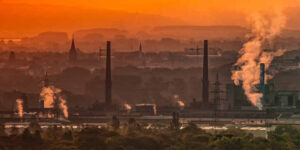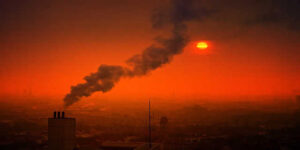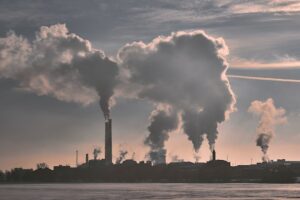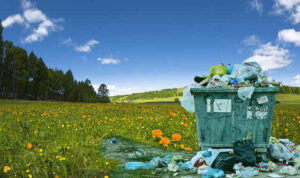Global Causes of Air Pollution
When you take a deep breath, think about the safety of the air, not the strength of your system.
Here we will take a quick look at 10 modern-day causes of air pollution which we need to pay close attention to.
– Agricultural pollutants
The growth of crops has been enriched greatly by the availability of fertilizers and manure (animal waste).
However, these solid materials have negated the essence of ensuring safe air supply due to the increased nitrogen oxide content in fertilizers and decomposed manure.
The combined force of these products emits ammonia; a gas that if found excessive in the air, can be detrimental to human health.
– Waste overflow
Increasing population especially in several parts of the African and Asian continents have equally tripled the piles of industrial/ household waste within communities.
This is a call for concern as these piles’ emission of nitrogen oxides pollutes the air rendering unhealthy smell accumulated for inhalation.
In addition, most living environments especially in the African region have taken to burning their household waste products due to the poor and ineffective source of waste disposal.
This is of most concern in our time.
– Fossil fuels fumes (F3)
This has to be one of the highest causes of air pollution as it increasingly continues to raise the growing effects of global warming with the fumes from natural gas pipeline transmissions, coal mining fumes, greenhouse gas, solid particle matters (PM) and oil spillages due to Underwater tankers.
– Dwindling natural habitat
Volcanoes, wildfires and floods are only but the least causes of nature borne air pollution that continues to affect mankind.
The carbon dioxide fumes along with the nitrogen oxides release to form an unhealthy combination of smoke and fog haze in the air called SMOG.
– Acid Rain
All activities of land, air and sea bring about emissions of nitric, sulphuric and carbonic acid pollution.
Their force can affect aquatic life negatively; cause respiratory disorder and further severe damages to plant life.
– Ozone Depletion
The greatest safety to the human skin cells is the availability of ozone in the stratosphere which guards against the harsh ultraviolet rays from the sun.
This however is experiencing a huge turn around with the depletion of the ozone layer due to release of hydrocarbons into the airwaves thereby raising cases of airborne diseases and lung cancer.
– Industrial Billows
It is no surprise the amount of carbon released from factories and industries on a daily basis.
This is a heavy pollutant to the air, fatal to industrial workers and a dysfunction to persons living within such communities.
– Household pollution
Call it indoor air pollution if you wish but the assuring fact is that this is the closest damage to human health than any other cause.
Those cooking haze from frying and boiling, the air fresheners, body sprays and deodorants as well as disinfectant sprays combined, force out clean air from the home thereby saturating it with increased heat from carbon dioxide and sulphur oxides.
– Locomotive exhaust
This has to be one of the most ignored causes of air pollution. Cars, trains, buses and even cigarettes produce a huge amount of carbonic smoke that glides and mingles into the air waves where people get to talk and breathe without thinking of the cleanliness of the air.
Countries in Africa are said to have the highest number of vehicles on the road and you know what that means?
It is a food for thought as to what the next five years will look like.
Finally, this may come as a surprise. Ever heard of digital pollution? Well, with the digital age here and as much as it has come to make the world a global community, it has its setbacks.
Research reveals that Information Technology accounts for the rising data consumption which requires electricity supply for adequate workability.
So notice that higher power supply will automatically mean higher emission of GHG (greenhouse gas).
Also, tech devices are being produced sporadically to meet the increasing demand for networking and data usage which is proposed to rise by over 60 per cent in five years.
The future of air pollution is a growing worry for today’s generation.
REFERENCES
- Brunilda, N.(2020). Is corona virus airborne? Available at: https://www.webmd.com/lung/qa/is-the-coronavirus-airborne
- CDIAC: Record High 2010. Global Carbon Dioxide Emissions from Fossil-Fuel Combustion and Cement Manufacture Posted on CDIAC Site.
- Invisible and ignored: air pollution inside the homes of Nairobi’s residents. Retrieved from: https://theconversation.com/invisible-and-ignored-air-pollution-inside-the-homes-of-nairobis-residents-81109
- Climate in the digital age. Retrieved from https://www.forbes.com/sites/tatianakoffman/2019/07/30/forbes-climate-in-the-digital-age/?sh=26f3a36dac22







